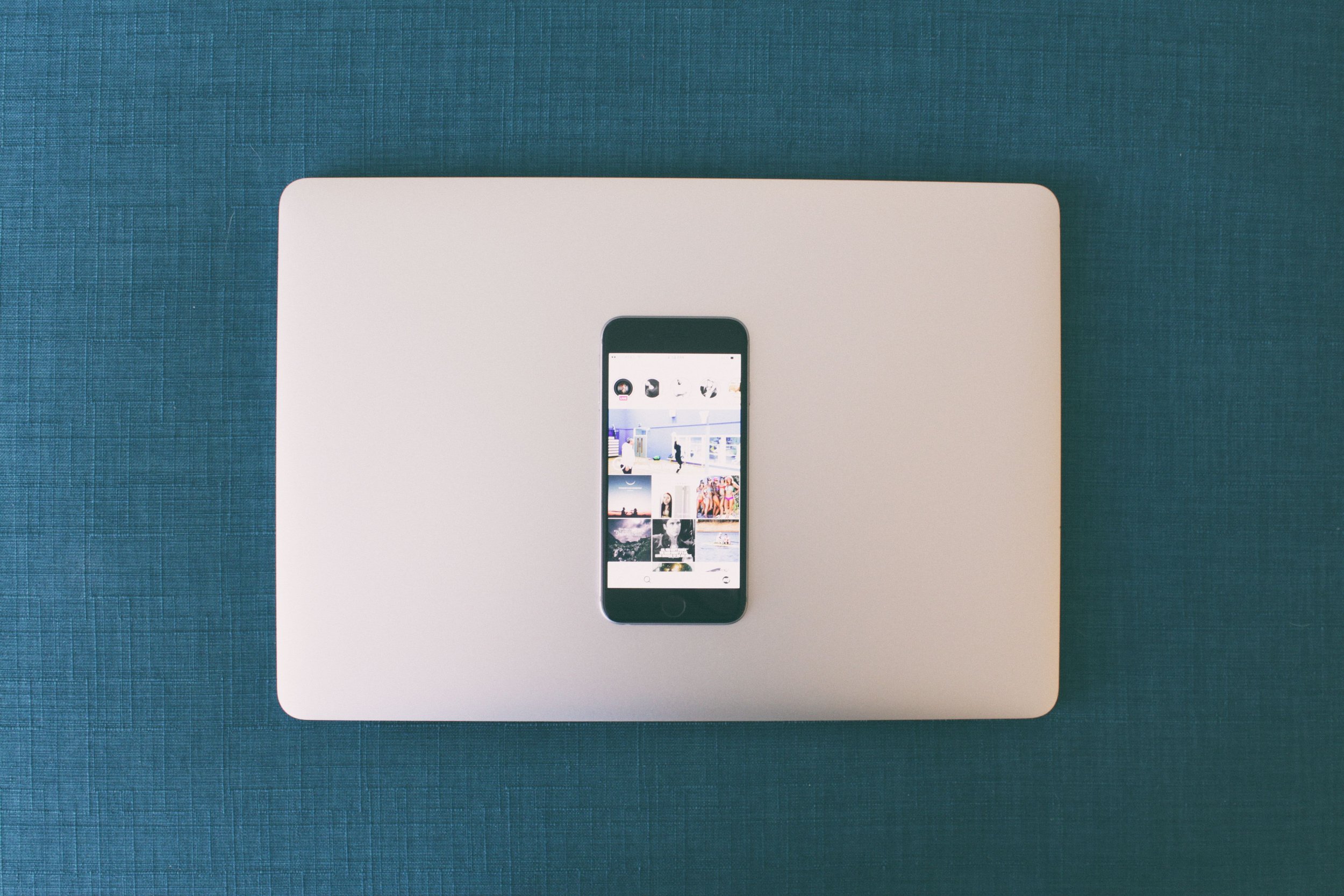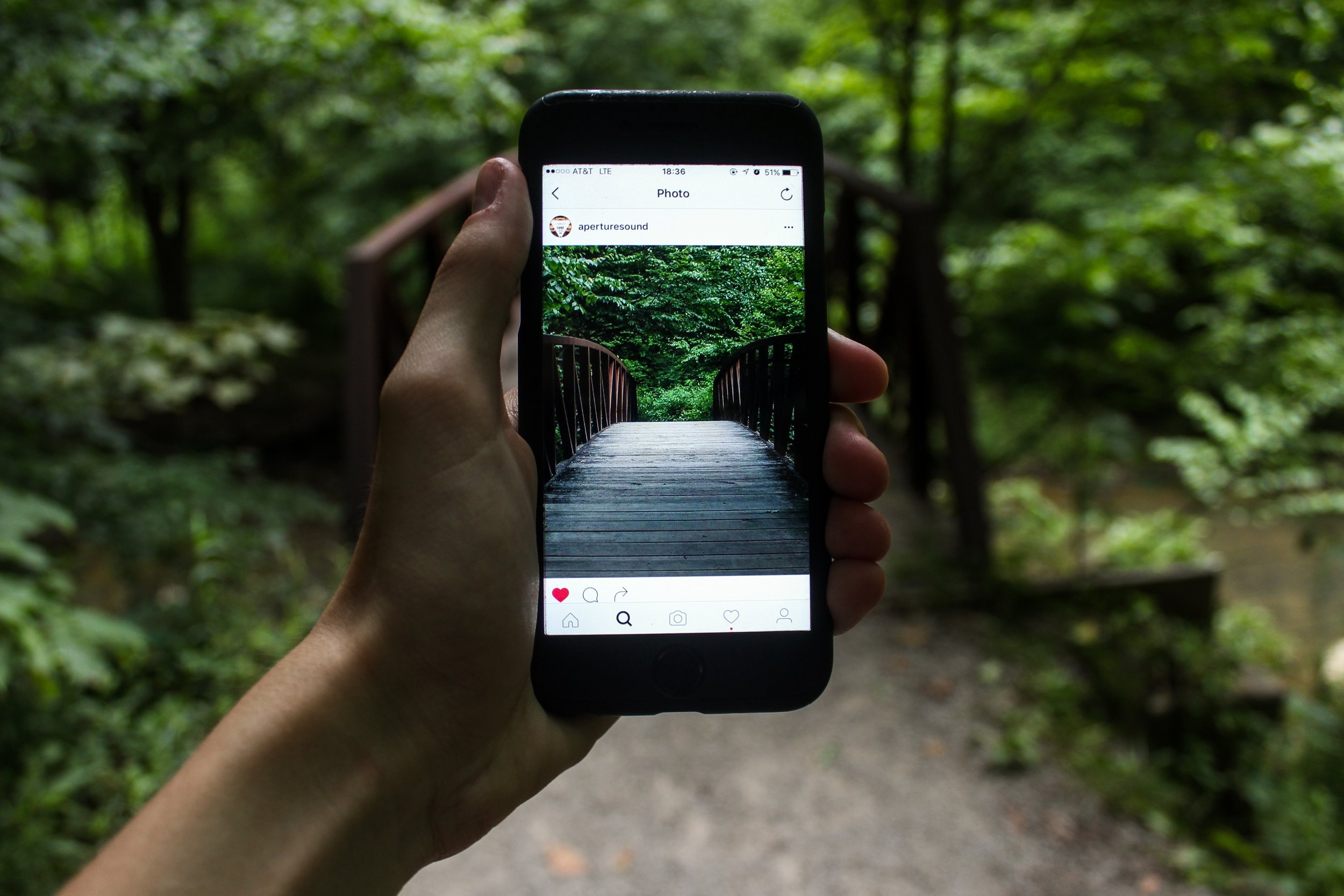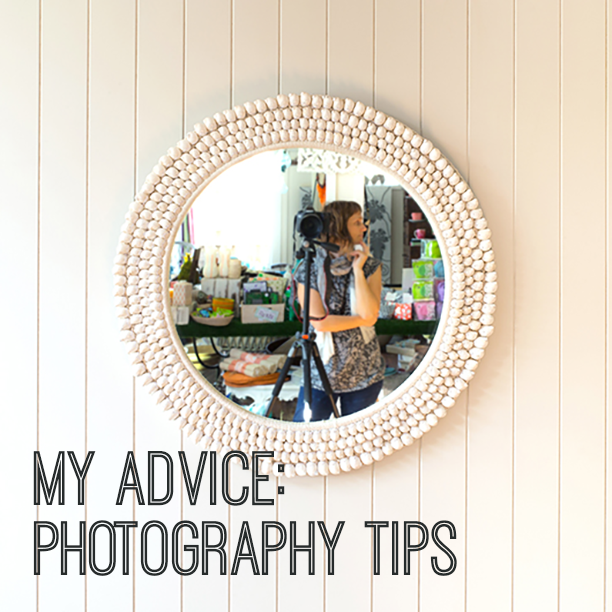How to plan a photoshoot
As a small ( or not so small ) business owner / creative there will perhaps come a time to consider hiring a professional photographer for a photoshoot. Whether it’s for a headshot / portrait, product photography for your website or social media, a market stall application, event photography, pitch to a magazine… but where do you begin?
As a small ( or not so small ) business owner / creative there will perhaps come a time to consider hiring a professional photographer for a photoshoot. Whether it’s for a headshot / portrait, product photography for your website or social media, a market stall application, event photography, pitch to a magazine… but where do you begin?
There are many things to consider - including choosing the actual photographer, but first up is usually the budget - what can you afford? Perhaps you have the $’s to fly to the Maldives with a team of stylists, models and make-up artists - but realistically, most of us don’t!
Costs
After you’ve established your rough budget, most photographers will work in hourly or half day / full day rates. Their rates are usually dependant on their skill and experience, plus post production and editing time on your chosen images.
Communication with your chosen photographer is key - from the outset, know what you want and whether it is achievable in the time frame that meets your budget. Shooting 50 products in 2 locations in 1 hour is unlikely!
Licensing of images
There are usually licensing or usage costs per image - this will vary from photographer to photographer and the client. For example, the terms of usage for a big brand’s large scale advertising campaign would generally cost more than a small business product shoot. There may be usage limitations on the images, and a smaller usage will often equate to a smaller fee. Some examples of usage are:
Usage for social media content only.
Photography for use in a packaging / element of a new product or that will be a product for resale.
Photography of your business / product for your website and branding.
Some photographers may also set a time frame limitations in licensing. One example is that you might have usage of those images for 12 months, then they will be available for you to re-license for an additional time and fee. Or they will give you total rights to those images for 6-12 months and then after that the photographer may license the images to another company or magazine.
How to find a photographer
Unless you have a good friend or a family member that is a professional photographer, it can be difficult to know where to start. Word of mouth is usually the easiest way - ask around your network. There are also many creative networking groups online where you can post a job and then go through the photographers profile/ website. Another good way is to look on social media at other brands/ imagery that you like and see who they have used. Many will include a photographer’s credit on a shoot.
Questions to ask/ things to think about prior to booking a shoot
Location: Where will the photo shoot take place? Is it in your own home/ office/ studio? Does the photographer work from their own studio? Will your shoot be on location, in a public space?
Some locations require permits for a photo shoot, with approval and payment prior to the shoot taking place. As an example, see Heide Museum which has requirements for using their site. With this in mind, is the location/ studio hire an additional cost to add into your budget ? Is the location out of town, and will it incur an additional photographer’s travel fee?
Props: Will you be sourcing the props / backdrops yourself or will you be employing a stylist ? A photographer will often have an existing supply of props or backdrops, however there may be a need for prop hire for flowers, food, additional products, plinths etc. Who will supply what ? Can you borrow items from friends ? Many retail shops will also hire furniture and props for a fee.
Create a brief: What exactly are you after ? Try to include any image examples/ sketches /mood board /colour /vibe etc. Pinterest is a great tool for this. Here’s an example of a food mood board I created recently.
Set a time frame: Do you require the images under a tight deadline? Most photographers will have a 1-2 week turnaround on post production of images, if not longer. If you need images ASAP, there may be an additional fee.
Know what you want, so that you can communicate your needs to your photographer, then they can provide a quote.
Here’s an example…
I was approached via email to shoot a product range of 5 new artwork prints, with the possibility of photographing the existing range if time permitted. I met in person with the business owner of Gussy - Simone (who agreed to me including this shoot here) to discuss further and to provide a quote.
Considerations were her budget, the time required for the shoot - we agreed upon a half day / 4 hour shoot. The chosen location was her home interior, utilising 6 different rooms. Each artwork required individual styling, using props from her home, my collection or borrowed from friends. So additional costs were minimal. We set ourselves the target of photographing her entire range of 18 prints in 4 hours, prioritising the new edition prints. We discussed that the images were for her website and social media/ promotion.
We created a Pinterest board and Simone organised a shot list, including which artworks would hang where within her home and with what props to suit each artwork, so time was not wasted on the day.
Here are some of the images from the shoot:
One thing to also consider with image usage is that we shoot in either and landscape or portrait mode, however posting to Instagram or your website design may be square - so images will need to be cropped. Remember to discuss this as an option in your usage/ editing or composition at the shoot. Also websites such as Shopify have their own file specifications / colour management.
Find a Photographer you can work and communicate with, ask questions - it may seem daunting, but most of us are nice!!!
Based in Melbourne, Australia, Natalie Jeffcott is a professional freelance photographer - specialising in editorial, interiors, small business lifestyle and product photography.
All images by Natalie Jeffcott.
http://www.nataliejeffcott.com/
How to stay "Instasafe" as a creative
I love Instagram. It lets me communicate to the world what I'm about (nourishing food, natural light and comfortable shoes wherever possible, and preventative health in life, law and business!), and has allowed me to connect with so many like-minded clients...
Photo via Pexels
I love Instagram. It lets me communicate to the world what I'm about (nourishing food, natural light and comfortable shoes wherever possible, and preventative health in life, law and business!), and has allowed me to connect with so many like-minded clients through my page @thelawyerslunchbox.
And I know many of my clients loving using it for their own businesses.
But we all need to make sure we stay legally safe on Instagram. This means not falling foul of Insta's terms and conditions, using the right images and not saying or doing anything illegal.
Here are some tips...
Types of images
Instagram has the right to remove, edit, block, and monitor accounts containing content that Instagram determines violates their terms of use.
To avoid problems, you must not post violent, nude, discriminatory, unlawful, infringing, hateful, pornographic or sexually suggestive photos. This term is interpreted sensibly, for example if your business is in fashion, intimate apparel, swimwear, music, celebrity, modelling etc, photos may be quite sexual without causing any trouble. But nudity, or pornographic inference (even if digitally-created), will not be okay. Use common sense when thinking about what Instagram and its diverse audience may find offensive. Nudity in photos of drawings, paintings and sculptures will be acceptable, as will photos of mastectomy scarring and breastfeeding women.
If your business is related to children or you like to share photos of your own family, be mindful of the broad audience that they may be open to. Photos of nude or partially nude children may be removed, even if they seem innocent and are being shared with the best intention. Instagram’s aim here is to ensure that they don’t fall into the wrong hands.
Copyright
You can only use images that do not infringe others’ intellectual property rights. If you are posting authentic images created by you or your business (such as your own photos, photoshoots, illustrations, videos, or graphics) then this is not an issue. But if you want to post an image found online, then you must be vigilant. There are millions of high-quality graphics and photos online available for free commercial use. Many websites curate images in the public domain, and you are free to use them in any way. In most cases, you do not have to provide attribution. But check the terms of the site to make sure. If attribution is
required, check what format.
It is best to assume every image you find online is copyrighted – a copyright notice is not legally required as notification of copyright, so the absence of a © or watermark isn’t a sign that no copyright exists. If an image is covered by copyright, the copyright holder may agree to some uses but not others. You must check this before using the image.
If you alter a copyrighted image, it does not relieve you from potential liability. If you repeatedly infringe other people’s intellectual property rights, Instagram will disable your account.
On Instagram, you are liable for what you upload. This means you are legally responsible for copyright violations even if you hire a social media professional who chose and used the offending image. It is important to ask your social media manager where they source their images from. You should contractually ensure that if an image they use is found to violate copyright and you are required to pay, that they will indemnify you.
Music is covered in the same way as images, and you are not allowed to use music that you don’t own the rights to, for any commercial or non-personal use. This includes music in videos uploaded to your feed as well as Instagram lives and IGTV, and can extend to music playing in the background of videos.
Photo via Pexels
What you can legally say
Don't copy any other person's written work in your Instagram posts. This may infringe their copyright.
And don't post unwanted comments, likes or other forms of commercial or harassing communication (spam) to Instagram users. This includes repeatedly contacting people for commercial purposes without their consent.
Further, online cyber bullying is a crime in Australia. You must not threaten, harass, or offend someone, stalk someone, access others’ Instagram accounts without permission or defame someone on Instagram.
How to deal with trolls
A troll is a member of an online community who deliberately tries to disrupt that community by posting inflammatory content.
How should you deal with trolls commenting on your business page?
Use Instagram’s built-in reporting option. Instagram will quickly remove content that does not meet community guidelines.
Unfollow or block the person who posted the comment. And delete the trolls’ comment on your post.
Sometimes ignoring a troll is best. If they are looking for a reaction, they may lose interest when you give them nothing.
If the troll is a customer with a complaint, take notice and try to help. Humour can be used to effectively engage unhappy customers and turn them into advocates for your business. Acknowledge yet make light of the situation, and apologise for the customer’s experience.
If the troll is spreading rumours or misinformation, address the issue head-on and retaliate with the truth.
If the troll points out a mistake, look into it, make the proper corrections and admit that you were wrong.
Instagram has the right to modify or terminate your account for any reason, without notice,
and at any time. So stay the right side of their terms and the law.
Jessica Kerr is the director of Sinclair + May. Jessica set up Sinclair + May with a view to do law differently and make legal services accessible for small businesses. Sinclair + May operate on a fixed fee basis and offer retainer services for their clients. Sinclair + May is a female-led, boutique commercial law firm and work extensively with the creative industry. You can follow Jessica on instagram @thelawyerslunchbox for useful legal tips and see more about Sinclair + May at www.sinclairmay.com.au.
Tips for DIY photography
As photographer Chase Jarvis once said, ‘The best camera is the one you have with you.’ You don’t need a fancy camera and lens to get great photos. If you don’t have the budget for a professional photographer, a few tips will have you on the way to snapping good photos with your trusty cameraphone.
As photographer Chase Jarvis once said, ‘The best camera is the one you have with you.’ You don’t need a fancy camera and lens to get great photos. If you don’t have the budget for a professional photographer, a few tips will have you on the way to snapping good photos with your trusty cameraphone.
Lighting
The key to any photo is the light. You don’t need elaborate lighting setups; a simple window will do. Set your subject up next to a window and have a play around with the positioning to see how the light changes. Try holding up some white cardboard opposite the window to fill in any shadows and see how that changes the image.
Make sure you don’t have any other lights on in the room, as this can mess up the colour of your image and create unwanted shadows.
If you are shooting a portrait, try going outside at different times of day. For example, at dusk the light is soft and the colour can be lovely.
Angles
Whether you are shooting a portrait or a product, think about the angles you are photographing from. Try a few variations—above, below, from the side—and see what looks best for your subject. Keep an eye on how the light changes with each different angle.
Backgrounds
You want your subject to be the main focus of your image. A distracting or messy background will confuse the viewer and take away from your subject, Your background should complement the subject, and also be appropriate for where and how the image will be used. If you are shooting products for a website, do you want a plain white background? Can you play around with some coloured backgrounds? Plain cardboard can make an excellent seamless background for product shots. It is cheap, easy to find and can be stuck to a wall.
Have a think about what you want to portray in the photo and then choose a background to support your vision. If you are photographing a portrait, what kind of portrait is it? Do you want to show the environment the person works in or is it a headshot that would be best with a plain background?
This simple setup was created with masking tape, butcher's paper and a piece of white card to fill in some shadows. Notice how the paper is taped slightly away from the wall to create a nice curve; this gives you a seamless backdrop. The white card is placed opposite the window to soften the shadow.
My husband loves nano-blocks! This image was captured on my iphone with the setup shown at left: nice and simple.
Do some research
Youtube is a treasure-trove of tutorials, and sites like Adorama.com and CreativeLive.com also have hundreds of how-to videos. If you are likely to be doing a lot of photography for your business, consider taking a workshop with a professional. This will get you well on your way to capturing great images for your business on a budget.
Most importantly, have fun!
Amanda Shackleton is a Melbourne-based emerging photographer with a focus on documentary-style imagery. She is currently exploring the relationship between people and their smartphones. To learn more about Amanda, visit her website or Facebook page, or follow her on Instagram (@amandashackletonphotography/).
Photography by Amanda Shackleton
The importance of a professional headshot
You only have to spend a few minutes looking through LinkedIn to see how much of a difference a professional headshot can make. No longer are your shoes the first thing a person notices. We live in a visual time and your headshot is the new first impression.
Whether it’s Facebook, LinkedIn, Tinder or Instagram, different platforms have different audiences and therefore require different headshots. You know that photo of you drinking wine on the beach in Mexico? As good as you look in it, is not going to land you your dream job. I’m not saying that your professional headshot needs to show you sitting nice and straight in a sharp suit against a plain background — though that might work for an IT professional or a CEO — but even creatives like photographers and graphic designers need professional images, albeit with a little more creative license.
You only have to spend a few minutes looking through LinkedIn to see how much of a difference a professional headshot can make. No longer are your shoes the first thing a person notices. We live in a visual time and your headshot is the new first impression.
Whether it’s Facebook, LinkedIn, Tinder or Instagram, different platforms have different audiences and therefore require different headshots. You know that photo of you drinking wine on the beach in Mexico? As good as you look in it, is not going to land you your dream job. I’m not saying that your professional headshot needs to show you sitting nice and straight in a sharp suit against a plain background — though that might work for an IT professional or a CEO — but even creatives like photographers and graphic designers need professional images, albeit with a little more creative license.
The beauty of working with a professional photographer to capture your headshot is that he or she will talk to you about your job and what style of image might suit your needs. You may need a few different styles to cover your online presence. Your photographer can help you determine what you need.
Some things to consider when thinking about your headshots are:
What length images do you need? Some options include full length, head and shoulders, or waist up.
Do you need a particular crop for your images? Some websites work best with a square crop, others with a standard crop.
What industry are you pitching yourself to? Are you in a corporate environment where a plain background and a head-and-shoulders style image is common or do you work in a creative industry where more relaxed images are acceptable?
Does your company have a style guide that needs to be adhered to? If so, are you able to obtain a copy to give to your photographer?
If this is your first time in front of a professional photographer, consider hiring a stylist or makeup artist. While these are not necessary, they can make a big difference if you are unsure about what to wear or how to do your makeup to get the look you are after. Your photographer will be able to recommend stylists and makeup artists if you are interested.
Different industries tend toward different types of headshots.
‘Okay!’ you say, ‘but how do I choose the right photographer?’
Good question. The most important thing is that you are comfortable with whomever you choose. Ask friends for recommendations, then look online for examples of the photographer’s work or ask him or her to send you some examples. Talk to the photographer about the style or any reference images you have seen to give her a good understanding of what you are after. Questions to ask your photographer may be:
How many outfit changes are included?
How many images will I receive?
Will they be edited?
How long is the session?
Will I receive both high-resolution (for print) and low-resolution (for online) image files?
Now have fun with it! Getting a headshot should not be a torturous experience. No one likes getting their photo taken but with the right photographer you’ll not only enjoy yourself, you’ll get some great images out of it, too.
Amanda Shackleton is a Melbourne-based emerging photographer with a focus on documentary-style imagery. She is currently exploring the relationship between people and their smartphones. To learn more about Amanda, visit her website or Facebook page, or follow her on Instagram (@amandashackletonphotography/).
Photography by Amanda Shackleton
Interview: Jett Street, Top End photographer
Darwin-based photographer Jett Street takes images of her clients through her wedding and family photography work, and shares everyday adventures through her Instagram page Little Karama Gangsters.
Coming from a creative family, and being surrounded by artists most of her life, Jett Street was destined to follow a creative path. Her career in the arts and community industry has meant she has worked with designers, models and musicians in a range of guises.
These days the Darwin-based photographer takes images of her clients through her wedding and family photography work, and shares everyday adventures through her Instagram page Little Karama Gangsters.
Living in a generous artistic town like Darwin has meant Jett has regular contact and collaboration with like-minded creatives. As she puts it, "In Darwin, you don't have to reach out to anyone - you have to try not to bump into them when you are ducking into the shop to buy milk."
You started exploring photography a few years ago - what drew you to it?
After my first daughter was born, I wanted better quality photos than I could get on my iPhone. So I piled all my birthday money together - along with a generous top up from my husband - and bought an Olympus mirrorless camera.
I didn't realise what I was getting myself into. I have categorically lost more sleep to photography than having two children.
In my early years, I played the clarinet, saxophone and drums. After uni I completed a degree in animation and in fine form. While at uni I procrastinated with jewellery making and silversmithing, along with some bad acrylic paintings which are sadly still hanging in our house.
I come from a really creative family. I was always the straighty-180 growing up, but I couldn't fight my genetic lineage forever. My mum had three kids, drove a white BMW and was a photographer. I am basically tracing her footsteps.
What do you love about taking photos?
My focus is to try to capture all the detail and magic to trigger and preserve those memories and in doing so document the story of our life or those parts of other people’s lives that I’m invited into.
Photography has enriched my life in so many ways: through the interest and observation in our story, of people, light and environment, and to experience and capture new adventures. It is a passion I can pursue whilst being present with my children, and it adds a layer of intent to my days. The photos of our life are the icing on the cake of a pretty fascinating craft. The more you learn, the more you realise you know nothing.
The word “photography” comes from the Greek words “phos” meaning “light” and “graphe” which means “to write.” Photography is the art of writing or drawing with light. I have spent a lot of time observing and studying light, which is a large influence for my work and also a part of my every day. It’s an enchanting thing to notice and one which I would have otherwise ignored. I love light, and sometimes that is all I care about in a photo. But the other 70% of the time, I am also intrigued with capturing the character and the story.
Can you describe your style of taking photos?
I love to capture the antics and character that define our daily life. I adore well-crafted images of ordinary things like eating cereal, brushing teeth, making cubbies and climbing stairs. I usually make mental notes of things the kids are doing, or how they are doing it, which speak to their character. And when possible, I try to catch this on camera.
I am starting to notice that it’s the challenges and rewards of photography that have me hook, line and sinker. It’s like gambling, but without the imminent bankruptcy.
For the record, I have burnt the porridge while waiting patiently for a moment to happen in that magical morning light. Many of my images come with their fair share of sacrifice.
How does where you live influence your work?
I grew up in Darwin and Karama was the suburb that the KGB came from (the Karama Ghetto Boys that is). So it endearingly became 'the bad part of town.' I reflect some of that gangster-ness in my stories and images.
Some of my first favourite images were taken in the swamp over the road, which I joked was our local park. Because I spend time in the neighbourhood with my kids, we stumble across some great graffiti, behaviour and characters. Living here has given me a creative license and lens through which to view the general rough and tumble of my two girls.
How do you work with your clients to tell an authentic story through photography?
This is something that I am still working on. Many of my first wedding bookings were from people who "didn't want wedding photos."
I developed an approach which is 90% documentary and 10% posed. You need some classic shots in there too, but this doesn't have to come with a side of cheese. I love weddings because there is so much activity, love and magic.
I also do in-home documentary for families and newborns. I encourage families to leave all their daily rituals until I arrive. This way, they are usually so busy doing, and not faking it, that they relax and I get some amazing moments.
You tell stories of your family through words and images. Why is this creative act important to you and how does it complement your professional photography work?
This is one of my favourite rituals and it’s a barometer for how busy and happy I am. If I can pull together some thoughts at the end of the day to share a story and a favourite photo, it means I have some mental space to do that, and it also reflects a presence I have shared with the kids through time and observation.
I started out doing this to share anecdotes with family and friends. It has become a really valued network with other "mamarazzi" from around the world, many who have played a role in my development as a photographer. I love to record all the details and parts of life that are so fleeting. It is basically, my diary, and a future gallery and love letter to my kids, to reflect our life and what I loved and noticed about them. They will never know me as a 33 year old mum when they are older, but hopefully when they read all those tangents, they will get a feel for my character as a Mum of young kids and how much I loved and adored our life.
I feel like I need to post regularly to keep some of my family and friends up to date on what the girls are doing. I also pledged to put my favourite posts into a book at the end of each year, but I still have to do 2016 and 2017. So the public accountability is a good thing.
You’ve recently branched out into sharing your knowledge through workshops – how important is creating connections with other creative people in your community, and how do you reach out to other creatives?
The reason I get so many good photos of my own kids is because I am living the same life, in all the nooks and crannies and for the best light of the day in any room or place we visit. If I teach other people to use their camera, observe light and develop a style of storytelling, then they can too. There is no one better positioned to document your days than you. You know the people, their character and the story and you have a unique perspective on it all.
Photography has helped me to focus on the beauty in our everyday life. Sometimes as a mother at home with kids (before I was working part time) being able to see and capture the humour in the chaos and mess was an absolute saviour. Even if you don't have kids, it injects a creative and interesting perspective into your daily ritual or travels. I hope that others can fall in love with it too.
I am fortunate to have been a part of the arts sector I was very young. I was able to hit up local artists to make animations with their images, use musicians work for soundtracks and collaborate with designers, models and other innovators.
In Darwin, you don't have to reach out to anyone, you have to try not to bump into them when you are ducking into the shop quickly for milk.
I have made some amazing friendships with local photographers who provide a reciprocated love of the craft, are collaborative with skills and ideas, and give my husband’s eardrums a break.
Could you share some other creative women who you are being inspired by at the moment?
My mother Linda Joy is an incredible NT landscape artist. If I keep tracing her footsteps, maybe I will become one in 20 more years.
My sister Matilda Algeria is a brilliant fashion designer. My other amazing sister Imogen is killing it in the recruitment and technology industry, while bringing Make-a-Wish dreams to life in her spare time.
In the NT, Yo Bell, Jess Ong and the rest of the team are doing some incredible work with Spun, their storytelling nights. They are bringing all the best characters and stories to life through their events and podcast. Amazing listening.
In the photography world my top five would be:
Helen Whittle from NSW, for her beautiful portraits.
Niki Boon from NZ for the most incredible documentary photographs of her life.
Twyla Jones for her emotional storytelling.
Meg Loeks from the USA for her incredible style of classic and magic, environmental portraits of her children.
Elizabeth Wood from the UK for her storytelling, self-portraits, and general feeling.
Kate Shannon is a freelance writer based in Brisbane after many years living in Darwin. She spends much of her time in the garden with her two little girls, and loves writing and learning about creative people, flowers, and plants.
Photography: Jett Street
Small town creative: Tara Pearce, wedding photographer
Tara Pearce is one half of Erin & Tara, a wedding photography business based in Kyneton, in the Victorian Goldfields. Erin & Tara have only been in the photo business for five years, but are in demand to capture the special days of couples all over Australia. You can find them on Instagram and Facebook.
First up, tell me about where you live. Have you always lived 'out of town'?
I live in Kyneton with my husband and two children. It is about a one hour drive from Melbourne. We have been here for eight years now. I spent time living in Kyneton when I was a child and my husband grew up here, so we both have a long term relationship with the place. It's been a great place to raise our two children Yorke and Mak, they are very established and happy here. It is far enough away from the city to be removed from it, but close enough to do business. My husband commutes there for work on a daily basis.
What is your employment background Tara. Can you tell me a bit about that?
Well I initially did a business degree and worked in the public sector. Our photography journey started 5 years ago when Erin & I thought it would be fun to photograph a wedding! This was before we owned a camera let alone knew how to use one. Let’s just say Google is our best friend!
Seriously? How can you have only been in the photo business for five years, that is crazy. You have done so well. How did you go from a city job to self employed creative. What did the transition look like?
Well initially I met a stylist, and I became a styling assistant. That only lasted a few gigs as the whole time I was watching the photographer and realised photography was something I would like to do. I was good friends with Erin and we started talking about it one day saying, this wedding thing, we could do it. We shot our first wedding together 3 months later and it all started from there. The biggest challenge was learning the technical side such as how to use a camera. Each year has had it’s own turning point from personal achievements such as creative growth to learning how to accept rejection gracefully. I believe the key turning point for us was when we started to trust our own judgment and abilities, which lead to more confidence giving us the freedom to express our creative vision.
In our first year we shot 30-40 weddings, the two of us with a camera each, so we could double our chance to achieving our vision and nailing the shot.
So five years on what has changed in how you do business?
After the first year of shooting weddings together we where pretty confident photographers and so we decided to shoot wedding individually. It works really well as that way we can commit to other individual work and family life. For example I generally take destination weddings while Erin prefers local weddings as she has younger children. These days we also have a team of talented assistants and we are about to launch a wedding photographer agency.
Can you tell me what has been your biggest challenge for your business?
Finding a good work/life balance! We are slowing finding a way to switch off from all the emails, but in the first three years of our business, we felt like we had to be 'on call' and sometimes I'd find myself emailing clients back at 2am. Crazy times! Not being photographers from the start meant having to learn all the technical stuff which was very daunting but together we worked it out. To be honest we learn something new every day, it's a pretty exciting industry to be in.
Oh and I nearly forgot…..juggling children and running a full-time business from home has it's challenges ;)
What about Erin & Tara are you most proud of ?
Looking back and remembering the conversation we had in a local cafe about becoming wedding photographers, that was five years ago and seeing where we are today! This is an achievement one we are very proud of.
What do you think has contributed to your success?
A lot of hard work, persistence and support from our amazing husbands! I'm also a massive believer in the Universe providing what you need when you need it.
Jasmine Mansbridge is a painter and mum to five kids. She regularly blogs about the intersection of creative work and family life, as well as her recent projects and travels. You can also find her on Instagram.
My Advice: Photography Tips
Human beings thrive on the visual, especially those who consider themselves creative. The online world reflects this - today our businesses and creative output is supported by image-heavy blogs, websites, and social media feeds which make it important to represent yourself and your imagery in the best possible way.
This month, I asked three professional photographers for their tips to improve the result when you're tasked with presenting your products or work in the best possible light.
Karina Sharpe, Conceptual Artist and Product Photographer www.karinasharpe.com.au // Instagram // @karina_jean_sharpe
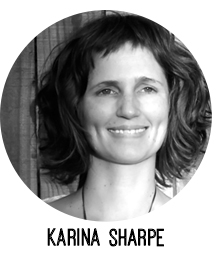
Imagery is big these days, and high calibre imagery has become both the norm and the expectation. I teach a lot of people how to take good photos more effortlessly - and less by accident - in my Benchtop Photography workshops. These are the three tips that people seem to find of most value.
1. The direction of LIGHT, in relation to an object’s position and orientation, can be the single most transformational element of your photographs. This is because objects have a form that will show itself differently depending on how its surfaces are lit up. Begin to notice the light around you and where it is coming from. Try and set your arrangements up on something that you can spin around in relation to the light source. Then, play with how the light falls onto, and across, your objects. Observe what gives the most captivating result.
2. SHADOWS are definitely not your enemy. In most situations we want to engage with our audience on an emotional level, and shadows provide depth, tangibility, realism and substance. However, we want to try and avoid the shadow of one object falling across another object, so become aware and move your objects if shadows are falling in an unfriendly manner. Also, try to avoid double shadows. If you notice this is happening, try to eliminate any extra light sources.
3. Creative use of BACKDROPS allows our images to standout, be recognisable, and build consistency for our brand. Coloured paper or cardboard are easy options, and things like tiles, fabric, flooring offcuts and fake timbers & textures give even more scope. Choose surfaces with your brand’s ethos in mind; timber is not just timber – white-washed might look refined and adventure-y, whereas a dark rough grain would be more earthy and homespun. Ask yourself, which timber am I?
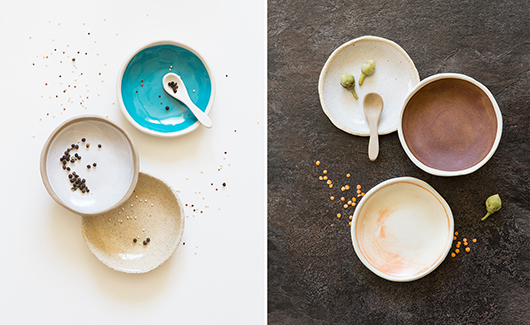
Jessica K Reftel Evans, Photographer www.amorfo.net // Instagram // @amorfophotography
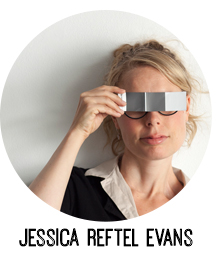
Before setting out on taking your images it's a massive time saver to work out clear visual objectives. Storyboard what it is that you're trying to achieve; a colour palette/mood-board and if you want these images to be more editorial/environmental or clean/factual. Take these thoughts with you as you prepare the shoot with backgrounds and props. Keeping the styling consistent is the key.
To display most products honestly and flatteringly I would suggest using a soft light source. If you don't have special lights you can use a window. Avoid direct sunlight and diffuse the light with a photographic scrim or thin white fabric. If the shadows are too heavy use a white card or another piece of white fabric on the shadow side of your product. Also, turn off your roof lights since they might change the colour temperature and light of your image. The colour of daylight changes throughout the day. So to make sure that your images have consistent and accurate colour representation use white balance settings. This can be done either on your camera or in your image processing software.
And remember, you might not get the perfect image the first time. So just practice, experiment and most importantly have fun. Happy shooting!
Hannah Rose Robinson, photographer www.hannahrose.com.au // Instagram // @hannah_rose_robinson
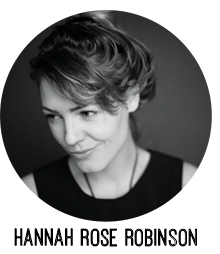
Tell a story. In today's world we are so bombarded with images everywhere we turn that it's hard to stand out. A visual identity is so important - carving out a style that is unique and becomes a recognisable brand, they tell a story through all the elements involved. Photography is just one element of that but an important one. Use imagery that tells a story, or evokes an emotional response. Put multiple images together to create a mood, or piece together a narrative. Write something to accompany the image/s, tell a story. I want to know what people are about, how they feel, their views on the world. Show your process. This is engaging and people like to be invited into the intimate space you can create with images and words. No matter what the subject matter, food, products, people, how can they be a story. What else is in the picture, what else can help tell my narrative.
Be unique. We are all guilty of scrolling Instagram or a favourite blog and getting tunnel vision on someone else's style when we see an image we fall in love with. Try not to get lost in this. I like to see people be different from the masses, find their own vision. There will always be trends that will come and go, but if you spend some time looking deep and hard on what your core vision and personal brand message is, you should be able to start carving out your own style. Be inspired by the images you like, but don't look to be a copy. Look to what the elements are that you like in those images (maybe it's the light or tone or mood) and be inspired by them to create your own unique look.
Switch off. The online world that we are all so intrinsically plugged into these days is immense. It takes up a lot of our time, we devote it our time, and it demands our time. Our technology and online lives are so ingrained in our experiences these days that it frankly makes my head ache. So my big tip is to switch off. Every now and then just switch it all off. Don't take a picture, don't blog, don't scroll. Go do the things you love to blog about and reconnect with them on a fully present scale. It's easy to miss the essence of a moment, lose sight of the essence of your work- whilst being lost in how to capture and share it. Every now and then, switch off and revaluate the process. Go climb a mountain purely to feel the joy in the ache of your legs, to feel the air sweetly fill your lungs, to drink in that view from the top, be fully present. Don't take a picture. Make a memory, and keep it for yourself. Put them in your bank to inspire you. It reboots your brain, and will only mean great things for all your creative endeavours.
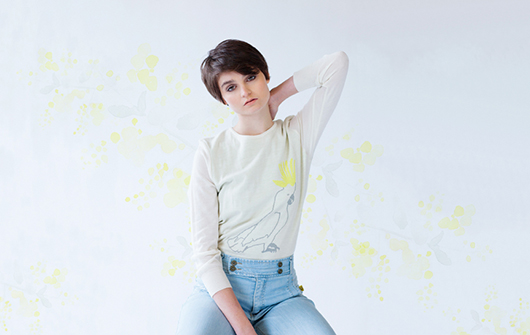

- - - Thank you ladies for sharing your photography tips. I am definitely going to have a play with my camera soon!
{Title image by Karina Sharpe}
Andrea McArthur (www.andyjane.com) has a passion for all things visual and works as an Art Director and Designer for the Brisbane Festival. Design is her true love and she goes weak at the knees over strategic branding. You’ll find her sharing on Instagram @andyjanemc.








